

EXPLORE BY TOPIC:
  Our top 10 resources
Our top 10 resources
  Childhood / Early Life
Childhood / Early Life
  Chronic Stress
Chronic Stress
  Education
Education
  Food Security
Food Security
  Genetics
Genetics
  Jobs & Work
Jobs & Work
  Housing / Neighborhoods
Housing / Neighborhoods
  Income & Wealth
Income & Wealth
  Race / Racism
Race / Racism
  Social Inclusion
Social Inclusion
  Policy & Change
Policy & Change





Buy the DVD
e-Newsletter
FAQs
Contact Us
Site Map
Home

|
 |


|
|
| |
|
Keyword=EP_5: 0 items found |
 A Place for Healthier Living: Improving Access to Physical Activity and Healthy Foods A Place for Healthier Living: Improving Access to Physical Activity and Healthy Foods 
REPORT from the Joint Center for Political and Economic Studies and PolicyLink, June 2004 There are significant, persistent disparities in the prevalence and consequences of chronic illnesses: disparities of race, ethnicity, and income that are linked not just to nutrition and physical activity directly, but also to the social, economic and community-level conditions in which people live. These conditions largely shape people's capacity to maintain a good diet and a life that includes healthful physical activity. While individual behavior and access to quality health services are key, these disparities will not be eliminated without addressing community conditions. This brief explains the importance of community and neighborhood to the obesity epidemic, and proposes solutions.
|
 |
Anchor Richmond - Community Opportunities & Anchor Strategies for the Berkeley Global Campus at Richmond Bay 
https://haasinstitute.creatavist.com/anchorrichmond Place Matters Follow-up:
What’s happening in Richmond, California?
The “Place Matters” episode of Unnatural Causes focuses on the city of Richmond, California. Much has happened in Richmond since the film’s release, including a 45% reduction in homicides and an attempt to pass the nation’s first soda tax (it lost thanks to millions of dollars spent by the soda and beverage industry).
Now UC Berkeley is planning a new campus in Richmond. This report by the Haas Institute for a Fair and Inclusive society looks back at Richmond, and forward to a unique opportunity to build new models of partnership ensuring the new Berkeley campus expands opportunity and community health for all. There are lessons here for how campuses, hospitals and other anchor institutions in marginalized communities across the nation can serve inclusion and equity, not displacement. |
 |
 Asian & Pacific Islander American Health Forum Asian & Pacific Islander American Health Forum 
WEB SITE APIAHF is a national advocacy organization dedicated to promoting policy, program, and research efforts to improve the health and well-being of Asian American, Native Hawaiian, and other Pacific Islander communities. They approach activities with the borse firmate imitazioni perfette philosophy of coalition-building and developing capacity within local communities, and advocate on health issues of significance to these communities, conduct community-based technical assistance and training, provide health and U.S. Census data analysis and information dissemination, and convene regional and national conferences on AA,NHOPI health. |
 |
 Asian Pacific Environmental Network Asian Pacific Environmental Network 
WEB SITE "APEN seeks to empower low-income Asian Pacific Islander (API) communities to achieve environmental and social justice. APEN believes that the environment includes everything around us: where we live, work and play. And we strive to build grassroots organizations that will improve the health, well-being and political strength of our communities." |
 |
 Bay Area Regional Health Inequities Initiative (BARHII) Bay Area Regional Health Inequities Initiative (BARHII) 
WEB SITE BARHII is a unique undertaking by local health departments in the San Francisco Bay Area to confront health inequities, and recently released a report, Health Inequities in the Bay Area (pdf). The regional collaboration includes public health directors, health officers, senior managers and staff from Alameda, Contra Costa, Marin, San Francisco, San Mateo, Santa Clara and Solano counties, and the City of Berkeley. In addition to its work to help health departments learn from and teach each other, BARHII is developing regional strategies that supplement and support local work. |
 |
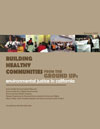 Building Healthy Communities from the Ground Up: Environmental Justice in California (pdf) Building Healthy Communities from the Ground Up: Environmental Justice in California (pdf) 
REPORT by the Asian Pacic Environmental Network et al., September 2003 A report on the landscape of statewide conditions as well as opportunities and challenges for building grassroots power and influence at the state level, using the framework of social justice. The report is designed to inform legislators and policymakers of the history of neglect and inadequate enforcement of environmental protections in California, and to identify policy, legislative, program, and investment gaps, and as a reference document to support direct organizing efforts and coalition-building. The reports contains recommendations and strategies for improving environmental justice in the state.
allreplica.net
uomega.com |
 |
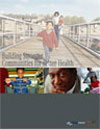 Building Stronger Communities for Better Health Building Stronger Communities for Better Health 
REPORT from Health Policy Institute & Policy Link This brief offers a framework for strengthening communities to improve the health and well-being of residents. One of four publications that outline strategies for achieving better health through community-focused solutions, this report is based on a review of the literature as well as on interviews with African American and Latino community health leaders (or those serving African American and Latino populations) and elected officials from across the country. |
 |
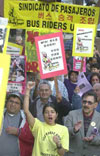 Bus Riders Union Bus Riders Union 
WEB SITE The Bus Riders Union, a project of the Labor/Community Strategy Center, is a progressive civil rights and environmental justice membership organization. Its work begins with the mass transit and public health needs of the Black community, the multiple communities of the African Diaspora, Latinoamericanos, Asian/Pacific Islanders, Indigenous communities, and working class whites who are transit dependent in Los Angeles. The Bus Riders Union seeks to promote environmentally sustainable public transportation for the entire population of Los Angeles, on the premise that affordable, efficient, and environmentally sound mass transit is a human right. |
 |
 Child Friendly Cities Child Friendly Cities 
WEB SITE, Project supported by UNICEF A Child Friendly City is actively engaged in fulfilling the right of every young citizen to: Influence decisions about their city: Express their opinion on the city they want; Participate in family, community and social life; Receive basic services such as health care and education; Drink safe water and have access to proper sanitation; Be protected from exploitation, violence and abuse; Walk safely in the streets on their own; Meet friends and play; Have green spaces for plants and animals; Live in an unpolluted environment; Participate in cultural and social events; Be an equal citizen of their city with access to every service,regardless of ethnic origin, religion, income, gender or disability.
|
 |
 Communities Taking Action: Profiles of Health Equity Communities Taking Action: Profiles of Health Equity 
The Prevention Institute Communities Taking Action is a collection of profiles developed by Prevention Institute that showcase successful community initiatives aimed at improving health equity. These profiles are meant to demonstrate key steps to creating healthy, equitable environments and inspire similar action in other communities and locales. Click on any of the map icons to view and browse the profiles. |
 |
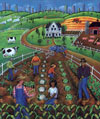 Community Food Security Coalition Community Food Security Coalition 
WEB SITE The Community Food Security Coalition (CFSC) is a North American organization of 325 groups working in social and economic justice, environmental issues, nutrition, sustainable agriculture, community development, labor, anti-poverty, anti-hunger, and other areas. With the ultimate objective to build strong, sustainable, local and regional food systems that ensure access to affordable, nutritious, and culturally appropriate food to all people at all times, they provide a variety of training and technical assistance programs for community food projects; support the development of farm to school and farm to college initiatives; advocate for federal policies to support community food security initiatives; and provide networking and educational resources.
The website also includes links to other food security organizations. |
 |
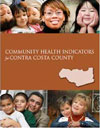 Community Health Indicators for Contra Costa County 2007 Community Health Indicators for Contra Costa County 2007 
REPORT from Contra Costa Health Services
If you like forever classic fake watches, you cannot miss the uk top quality cheap replica rolex watches canada.
What kinds of perfect replica watches are worth having? US 1:1 Best Replica Watches Sales with Real Swiss Movement.
|
 |
 Dwelling Disparities: How Poor Housing Leads to Poor Health Dwelling Disparities: How Poor Housing Leads to Poor Health 
SCHOLARLY ARTICLE by Ernie Hood, Environmental Health Perspectives, May 2005 Recently, the scope of environmental health science has broadened to encompass how the built environment affects human health. Many groups are focusing research efforts on how inadequate housing in particular contributes to poor health. Low-income and minority populations are known to be especially at risk for housing-related adverse health effects. Yet fully elucidating the links between the built environment and health disparities is a huge task, one that is requiring new tools and research methods. Community groups are increasingly being brought into the research loop to ensure that efforts to identify and reduce health problems are appropriately targeted. |
 |
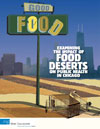 Examining the Impact of Food Deserts on Public Health in Chicago (pdf) Examining the Impact of Food Deserts on Public Health in Chicago (pdf) 
REPORT by Mari Gallagher Research & Consulting Group for the LaSalle Bank, 2006
This report looks at the effects of "food deserts" (areas with minimal access to grocery stores) on the health of residents in Chicago's neighborhoods. The study develops an empirical score to quantify the balance of food choice (groceries vs. fast food outlets) available to residents, and compares food access and food balance directly to health outcomes, holding constant education, income, and race. They find that African American communities are especially likely to have poor balance of food choice, and that residents of these "food deserts" suffer noticable health effects.
Swiss made 1:1 cheap rolex replica uk watches Shop Sale
Shop around. The Swiss cheap replica cartier uk with high quality are here. Read more details if you want. |
 |
 Fair Growth 2020: A Tale of Four Futures Fair Growth 2020: A Tale of Four Futures 
ARTICLE by Lance Freeman, House Facts & Findings, 2000 What will America look like in 2020, given the steady decline of our central cities and our unchecked suburban expansion? In this 2000 article, author Lance Freeman looks at four possible scenarios for the future, and their implications for urban sprawl and social equity. |
 |
 Food Price Inflation Changes How We Shop Food Price Inflation Changes How We Shop 
NEWS ARTICLE by Alan Scher Zagier, Associated Press, March 31, 2008 The worst case of food inflation in nearly 20 years has more Americans giving up restaurant meals to eat at home. We're buying fewer luxury food items, eating more leftovers and buying more store brands instead of name-brand items. |
 |
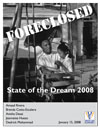 Foreclosed: State of the Dream 2008 Foreclosed: State of the Dream 2008 
REPORT, United for a Fair Economy, January 2008 In this year's report for Martin Luther King, Jr. Day, United for a Fair Economy found that the subprime lending crisis is causing the greatest loss of wealth to people of color in modern US history. They also estimate the difference in losses due to racial bias. The report details how and why the damage occurred, and offers solutions for what can be done. |
 |
 Healthy Development Measuring Tool Healthy Development Measuring Tool 
WEB SITE Developed by the San Francisco Department of Public Health, this tool is a comprehensive evaluation metric to consider health needs in urban development plans and projects. The Tool encompasses a community-based vision for planning and uses public health to explicitly connect physical and environmental planning to a wider set of social interests.
louis vuitton väska replika |
 |
 Healthy food getting more expensive: study Healthy food getting more expensive: study 
NEWS ARTICLE from Reuters Health Describes a new study that shows the price of fruits and vegetables is climbing faster than inflation, while junk food is actually becoming cheaper. Includes price-per-calorie comparison of nutritious vs. "junk" foods.
cheap fake watches uk
cheap panerai replica uk |
 |
 Healthy Homes and Early Learning: Addressing Social Determinants of Health in Seattle and King County (pdf) Healthy Homes and Early Learning: Addressing Social Determinants of Health in Seattle and King County (pdf) 
PRESENTATION SLIDES from Jim Krieger, Public Health - Seattle & King County / University of Washington The slides from a presentation by Jim Krieger, one of the experts featured in Place Matters, Episode 3 of UNNATURAL CAUSES. Krieger discusses how the High Point project sought to address various social determinants of health by building healthier homes and neighborhoods. The second half of the presentation discusses early childhood development and the need to provide early education.
The website offers uk high quality top swiss made rolex replica uk for both men and women.
Swiss 1:1 quality 2023 Top Swiss Made Replica Watches UK at affordable prices have everything that one expects to find. |
 |
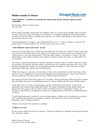 Hidden Wounds of Violence (PDF) Hidden Wounds of Violence (PDF) 
NEWS ARTICLE, Chicago Tribune, April 28, 2008 A clear and compelling article about the "secondary" negative health effects that violence has on children. |
 |
.jpg) High Point, Seattle High Point, Seattle 
WEB SITE Information on the High Point Community in Seattle, featured in Place Matters, Episode 5 of UNNATURAL CAUSES |
 |
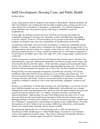 Infill Development, Housing Costs, and Public Health (pdf) Infill Development, Housing Costs, and Public Health (pdf) 
EDITORIAL by Rajiv Bhatia, Director of the San Francisco Department of Public Health’s Occupational and Environmental Health Section While acknowledging the great potentials of infill development to curb sprawl and revitalize city centers, Bhatia calls attention to the great need for decision-makers to consider the needs of existing residents. Among other things, he recommends a Health Impact Assessment (HIA) for affected communities during the planning process. |
 |
.jpg) Interdisciplinary Consortium on Urban Planning and Public Health (ICUPPH) Interdisciplinary Consortium on Urban Planning and Public Health (ICUPPH) 
WEB SITE by the Harvard Center for Society and Health ICUPPH brings together academics, practitioners, students, and community members focused on urban planning and public health to help advance the state of each practice through collaboration. ICUPPH members bring expertise and experience in myriad areas, including but not limited to environmental justice, food systems, healthful affordable housing, residential segregation, urban air quality, and obesity and the built environment. ICUPPH's activities fall into four main tracks: education, outreach, and research/consulting. ICUPPH is advised in its work by faculty members from the Harvard School of Public Health, the School of Architecture and Planning at MIT, Tufts University (the Department of Environmental Policy and Planning), and the Boston University School of Public Health. |
 |
 International Making Cities Livable International Making Cities Livable 
WEB SITE The International Making Cities Livable Conferences were founded in 1985, and are held biannually in the United States and Europe. They are unique in enabling city officials, architects, planners, developers, community leaders, behavioral scientists, artists and others responsible for the livability of their cities to exchange experiences, ideas and expertise.
|
 |
| 1 | 2 | 3 Next » |
|




